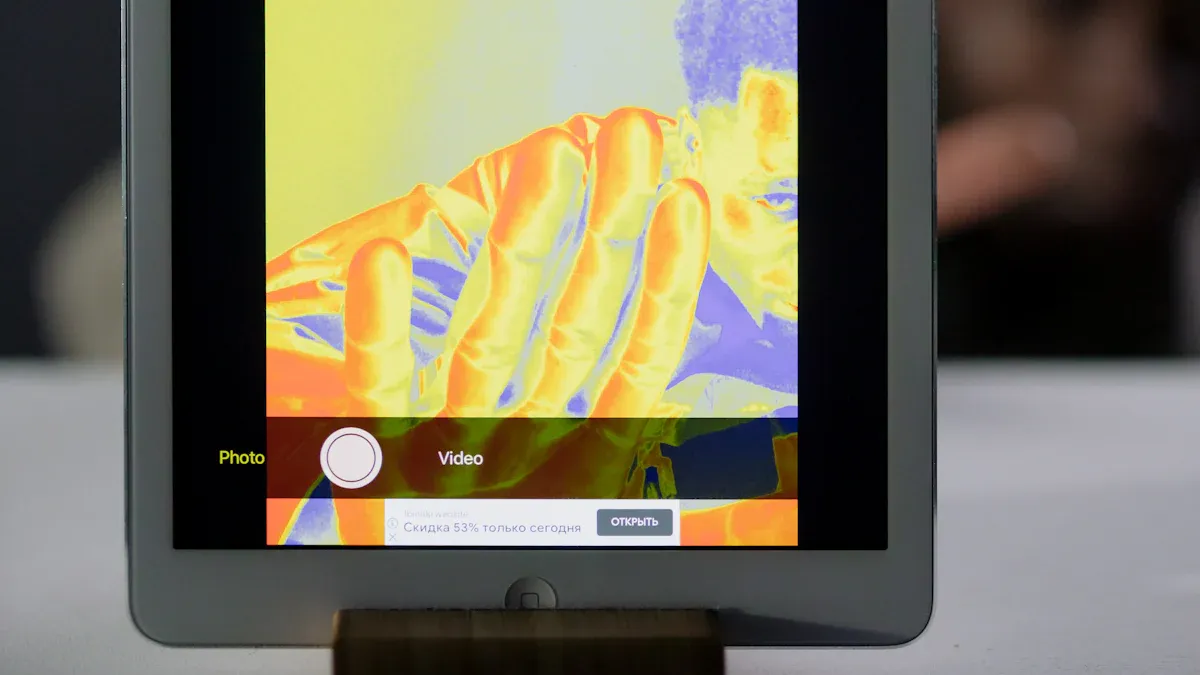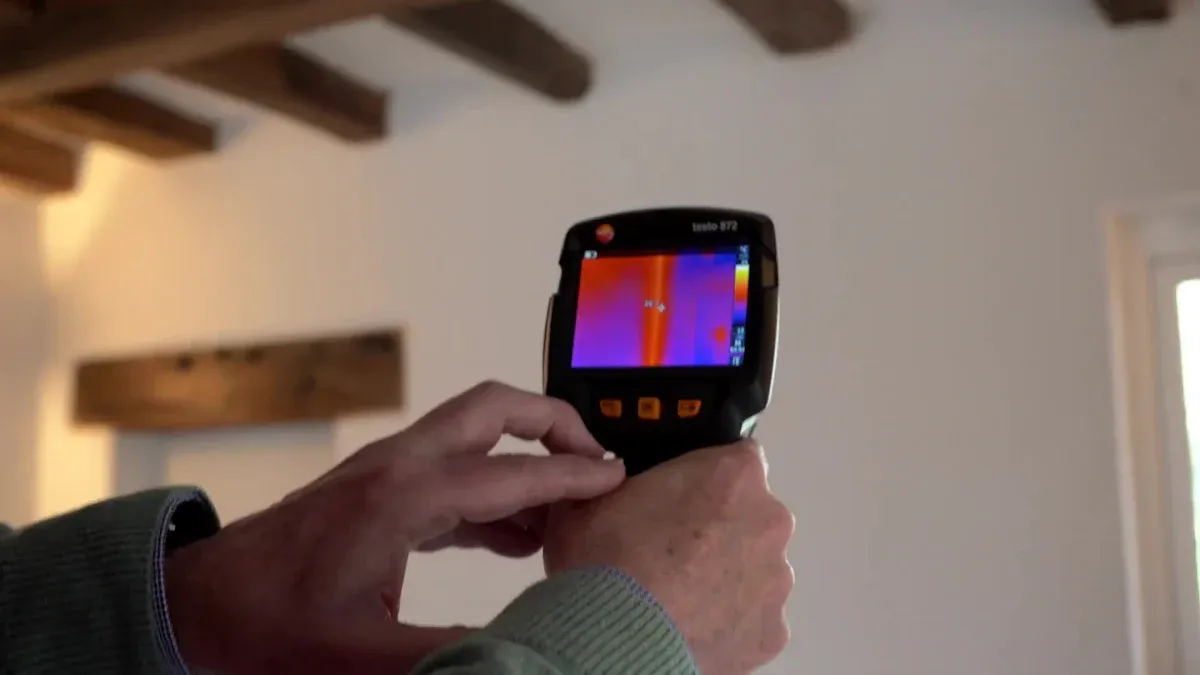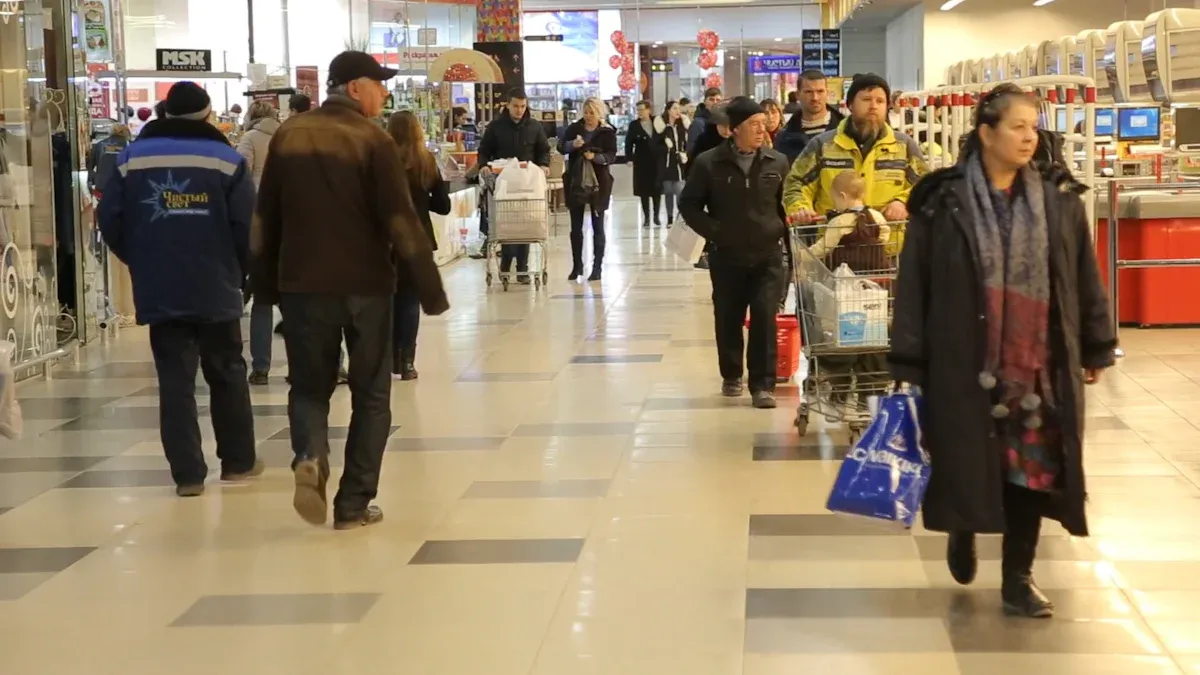How AI Thermal Sensors Transform Store Crowd Monitoring in 2025

You notice a big change in how stores watch crowds with ai thermal sensors. This technology looks at heat, not pictures, so no one knows who you are when you shop. You get quick warnings when stores fill up with people. Store owners count people very well and keep things running easily. You do not have to worry about privacy because these sensors do not save faces or photos.
Key Takeaways
AI thermal sensors keep people’s privacy safe. They find body heat but do not take pictures or personal data. These sensors watch crowds in real time. Stores can act fast if there are too many people. This helps keep everyone safe. AI thermal sensors are very accurate. They are better than old camera systems at counting people. The sensors give live data to the store. This helps managers put staff in the right spots. It makes lines shorter and service better. AI thermal sensors help stores make better layouts. They also help with where to put products. This makes shopping better for everyone.
AI Thermal Sensors in Retail

How AI Thermal Sensors Work
You may ask how ai thermal sensors help stores count crowds. These sensors find body heat instead of taking pictures. When you walk in, the sensor sees your heat shape. It does not know your name, but it knows someone came in.
Thermal sensors use machine learning to get better at counting. They can count people even if the store is busy or dark. You can see these sensors above doors or in busy aisles. They send live data to managers, so they always know how many people are inside.
Here are some important facts about these sensors:
They work well when it is dark or the lights are off.
Their main job is to count people as they walk by.
Sometimes, they have trouble if people walk close together.
The sensors send quick updates to help stores act fast.
Tip: Since ai thermal sensors only see heat, they work even if the lights are off or the weather changes.
Privacy and Accuracy
You do not need to worry about privacy with ai thermal sensors. These devices do not take photos or record videos. They only see heat shapes, so your identity is safe. This makes shopping feel better for you and others.
Stores want to make sure their crowd counts are right. Thermal counters use infrared radiation to spot people and count foot traffic. They sit above doors and look for body heat. Most new sensors are right more than 95% of the time in tests. Some brands, like Axis and FOORIR, can reach up to 98%.
Here is a table that shows how accurate popular brands are:
Brand | Accuracy Rate (%) |
|---|---|
Axis | 97-98 |
Bosch | 96 |
Hikvision | 95 |
FLIR | 96-97 |
FOORIR | 98 |
You should know that sunlight or big crowds can make counting harder. Still, new technology helps these sensors get better at telling people apart, even in busy stores.
Thermal sensors keep your privacy by only seeing heat.
They give live data, so stores can act fast.
Most sensors now are very accurate, often above 95%.
With ai thermal sensors, shopping is safer, more private, and more accurate.
Comparing Traditional and AI Methods
Manual and Camera-Based Monitoring
Stores sometimes use cameras or workers to watch crowds. These old ways have many problems. Cameras are mostly for security, not counting people. Workers can miss people when it gets busy. Camera systems might collect your personal data, which can make you feel worried about privacy.
Here is a table that shows how traditional camera systems and dedicated counters are different:
Aspect | Traditional Camera Systems | Dedicated Counters |
|---|---|---|
Privacy | Potential for personal data collection | Processes anonymized signals, ensuring compliance with privacy regulations |
Accuracy | Focused on surveillance, leading to unreliable data | Designed for precise counting, not affected by lighting or positioning |
Camera-based systems are not always accurate. Their people-counting can be between 70% and 90%. Bad lighting, where the camera is, and big crowds can make it worse. It is hard to tell everyone in the store that their data is being collected. Sometimes, these systems even get data from kids without asking. Using cameras for crowd analysis can put your privacy at risk.
Note: Old methods are slow to send alerts and can miss quick changes in crowd size.
AI Thermal Sensors Advantages
You get better results with ai thermal sensors. These sensors use heat, not pictures, so your privacy is safe. They do not save faces or personal details. You can trust the numbers because these sensors are up to 98% accurate, even in dark or crowded places.
Let’s see how ai thermal sensors and old methods are different:
Feature | AI Thermal Sensors | Traditional Methods |
|---|---|---|
Data Processing | Integrates AI for immediate analysis | Relies on manual or delayed processing |
Real-time Monitoring | Enables instant alerts and health monitoring | Often requires manual checks |
Anomaly Detection | Uses deep learning for sensitive detection | Simple methods prone to false alarms |
Response Time | Sends immediate alerts to mobile devices | Delayed response due to manual checks |
Ai thermal sensors give real-time updates. Store managers get alerts right away if the store is too full. These sensors also find strange patterns fast, so stores can act quickly. You get a safer and more private shopping trip.
Features in 2025
Real-Time Alerts
You can get real-time alerts to help keep stores safe. When too many people are in one spot, the system sends a warning fast. This helps stop overcrowding and lets you handle emergencies quickly. You also get alerts for things like slips or possible security problems. These alerts work in stores, train stations, and at events.
Feature | Description |
|---|---|
Get real-time alerts when areas exceed safe occupancy thresholds. | |
Applicable Environments | Retail, Transportation Hubs, Events, Corporate Workspaces. |
Tip: Real-time alerts help you act fast, keeping both customers and staff safe.
These alerts can also spot strange groups or see if a known troublemaker comes in. The system checks many cameras at once, so you do not miss anything important.
Watch how customers move and act
Find strange groups of people
Get alerts for theft or security problems
Notice if a known troublemaker enters
Use many cameras for better coverage
Occupancy and Density Tracking
You can see how many people are in your store at any time. AI thermal sensors use heat, not cameras, so shoppers stay private. These sensors give live updates about how people move in the store. You can see which spots get busy and when the store is most crowded. This helps you change the store or move products to better places.
Occupancy data links how many workers you need to how many people come in. You can also match loyalty programs to busy times. More stores use these sensors now because they trust the technology.
AI thermal sensors use heat, not pictures, to keep privacy.
Get live info about how people move in the store.
Change store layouts and check busy times to work better.
Aspect | Impact |
|---|---|
Use space better, making shopping easier and more enjoyable. | |
Staffing Levels | Adjust staff based on foot traffic for better service during busy times. |
Safety Protocols | Manage safety by watching occupancy during peak hours. |
Resource Allocation | Use resources wisely, reducing waste and ensuring key services. |
Note: Good occupancy data helps you follow safety rules and keeps people safe, especially in emergencies.
Staff Optimization
You can use live data from AI thermal sensors to see how customers move. This helps you put workers where they are needed most. When you know which spots are busy, you can send more staff there. This makes lines shorter and helps customers faster.
Live data helps you send staff to busy spots.
You can save money by using staff better.
Automatic shift planning means fewer mistakes and saves time.
AI tools help you guess busy times, so you always have enough staff.
Many big stores use AI to make their stores better. Walmart uses smart tools to match workers with busy times and save money. Target uses AI to look at resumes and hire better people. Amazon guesses when shopping will be busy to keep things running well.
AI does simple jobs, so staff can do more important work.
Workforce tools help plan shifts based on how busy it is.
Smart guessing helps you avoid too many or too few workers.
Callout: Staff optimization leads to better service, happier employees, and higher profits.
Retail Impact

Customer Experience
When stores use ai thermal sensors, shopping feels easier. These sensors help managers see where people walk and where crowds are. Stores can open more registers when lines get long. You find what you want faster because stores move things to better spots. The store saves energy, so it feels nicer inside.
Stores move things so you find them fast.
Managers open more registers when it gets busy.
Shopping feels safer and more friendly.
Stores make customers feel special by using technology to make shopping less stressful.
Metric | Improvement Description |
|---|---|
More sales happen because staff and store layouts are better. | |
Reduced Wait Times | Shorter lines because stores watch crowds closely. |
Enhanced Shopping Experience | Shopping is better because stores study how people shop. |
Safety and Compliance
Smart sensors help keep you safe in stores. They watch over goods that need the right temperature. Stores follow safety rules by using these sensors. If something is wrong, managers get alerts and fix it fast. You trust the store more because food stays safe and risks are lower.
Evidence Type | Description |
|---|---|
Sensors always check goods and store conditions. | |
Compliance with Standards | Stores follow safety rules by watching temperature and crowds. |
Risk Reduction | Fast alerts stop problems before they get worse. |
Improved Customer Trust | You feel safer because stores use smart sensors. |
Cost Savings | Stores save money by using less energy and wasting less. |
Smart sensors help stores keep you safe and follow important rules.
Data-Driven Decisions
You get better service when stores use data to make choices. Managers look at sensor data to decide where to put things and when to add workers. Kroger uses data to make checkout lines shorter. Zara uses sensor data to keep track of stock and make shopping better. Coca-Cola moves displays to busy spots to sell more.
Retailer | Application | Outcome |
|---|---|---|
Kroger | Uses data to manage lines | Checkout wait times dropped from 4 minutes to under 30 seconds |
Zara | Uses ai and sensors for trends and stock | Shopping is better and stores work smoother |
Coca-Cola | Uses heatmaps to move products | More sales by putting displays in busy places |
Stores use live data to make smart choices, so you get faster help and find things easily.
AI thermal sensors help stores handle crowds in new ways in 2025. Stores become safer, service gets better, and your privacy is protected. Here are the main benefits:
Key Takeaway | Description |
|---|---|
Enhanced Customer Safety | Sensors help stores follow health rules and keep people safe. |
Live data helps stores use workers and space in smart ways. | |
Personalized Engagement | Smart tools make shopping better for each person. |
To get ready for the future, you should:
Use live heatmaps to find crowded spots.
Look at data to plan for busy times.
Be careful with privacy and data as you update systems.
Start getting ready now to make your store safer and smarter with AI thermal sensors.
FAQ
How do AI thermal sensors protect your privacy?
These sensors only see body heat, not faces. They do not save your name or any personal details. You can shop without anyone knowing who you are.
Can AI thermal sensors work in low light or darkness?
Yes, they work well even when it is dark. They count people by reading heat, not by seeing pictures. This means they work both day and night.
What happens if the store gets too crowded?
You get alerts right away if there are too many people. Store managers can open more registers or move people to safer spots. This helps keep everyone safe and comfortable.
Are AI thermal sensors hard to install?
Most sensors go above doors or in busy places. Many brands make them easy to set up. You do not need special wires or a hard setup.
How accurate are AI thermal sensors compared to cameras?
Most AI thermal sensors are right 96–98% of the time.
Camera systems are less accurate, often below 90% in bad light or crowds.
System Type | Accuracy Rate (%) |
|---|---|
AI Thermal Sensor | 96–98 |
Camera-Based | 70–90 |
See Also
The Future of Retail: Embracing AI-Driven Stores
Understanding the Growth of AI-Enhanced Corner Shops
Upcoming Changes to Walmart Self-Checkout by 2025
Transforming Online Retail Management with AI Tools
Revolutionizing Retail: The Impact of Smart Vending Machines
